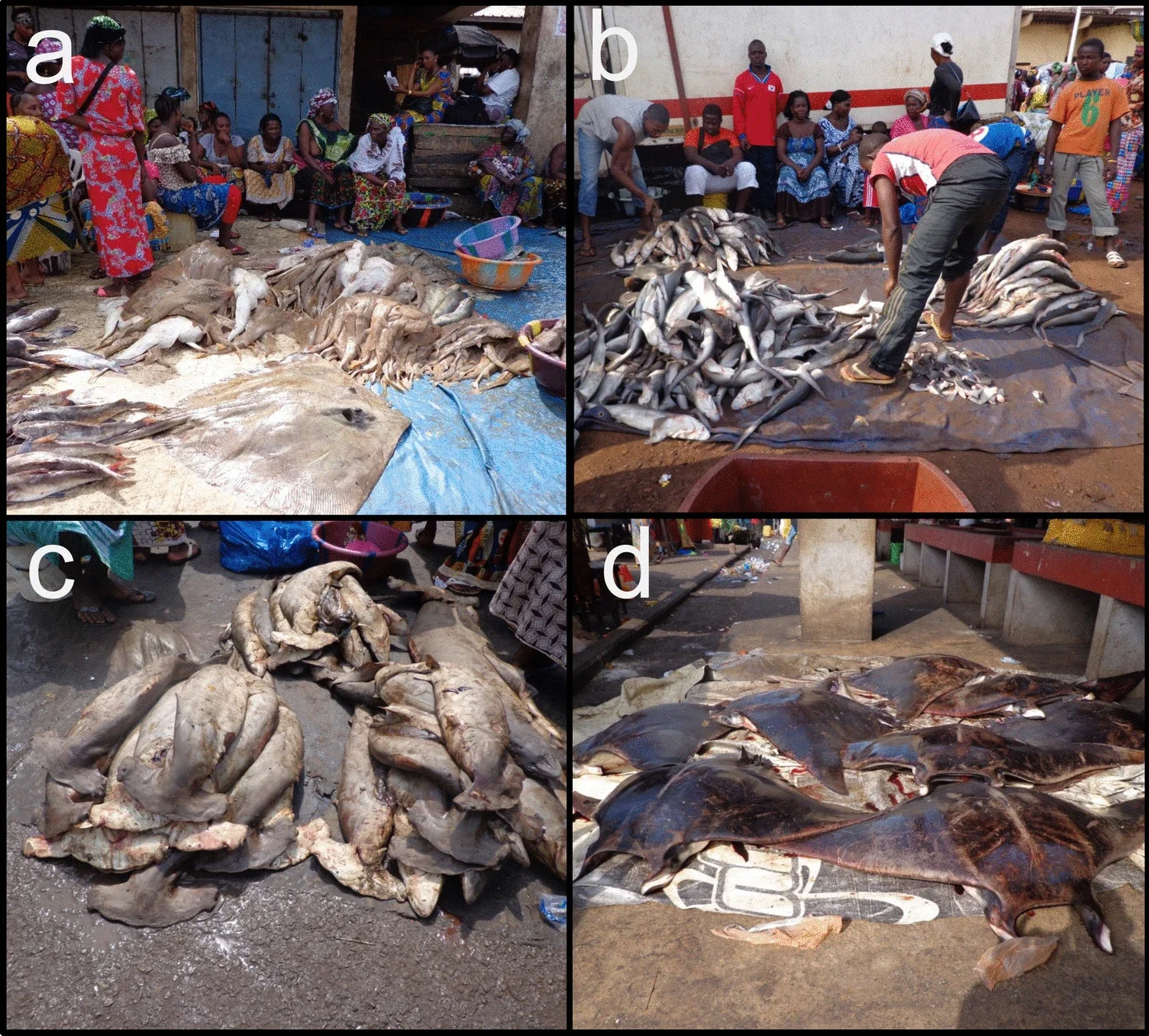Guinean landing surveys of Bentfin devil rays add insight into threatened elasmobranch catch
October 2025
Shay Kashey, Framoudou Doumbouya, Betty Laglbauer, Isabel Ender, Daniel Fernando, Guy M. W. Stevens & Colin A. Simpfendorfer
Keywords: Mobula • Rays • Sharks • Species Composition






Summary: Populations of many elasmobranchs are declining globally, with over a third threatened by extinction, mainly due to fishing. In West Africa, limited species-specific catch data hinders effective management despite high catches. This study assessed elasmobranch landings in Guinean waters, their trade value, and management implications. Over ten months in 2014–2015, 1954 specimens representing 17 species were recorded at four markets. Most species (94%) are threatened, with the bentfin devil ray (Mobula thurstoni) the only mobulid species recorded. Species composition varied by market, with certain sharks and rays as indicators. Stingray meat commanded higher prices than larger sharks, highlighting targeted exploitation and informing regional conservation efforts.
Abstract
“Populations of many elasmobranchs have decreased globally, with over a third of species threatened with an elevated risk of extinction, largely due to fishing pressure. In West Africa, a general lack of species-specific catch data limits the ability to implement effective management, despite significant elasmobranch catch. The aim of this study was to (1) assess landings of mobulid rays, along with other elasmobranch species, recorded opportunistically in fisheries from Guinean waters, (2) provide information on the value and trade of these species, and (3) discuss management implications. Elasmobranchs were photographed and identified during market surveys over a ten-month period in 2014 and 2015, at four local Guinean fish markets: Bonfi, Boulbinet, Kassa, and Kamsar. A total of 1954 specimens, comprising 17 different elasmobranch species, were recorded across all markets. Of these species, 94% are assessed as threatened (vulnerable, endangered, critically endangered) and 6% are assessed as Near Threatened on the IUCN’s Red List of Threatened Species. The only mobulid species recorded was Mobula thurstoni, with significantly larger specimens recorded in Boulbinet, while in Bonfi fishing grounds overlapped with young-of-the-year specimens. When considering all elasmobranch landings, Bonfi and Boulbinet had similar species compositions, although when considering daily data, species composition tended to differ. Indicator Species Analysis indicated that Carcharhinus falciformis, Carcharhinus leucas, and Mustelus mustelus were top indicator species for Bonfi (with high specificity and fidelity), while Paragaleus pectoralis and Gymnura sereti were key indicator species for Boulbinet. Records of selling price at Bonfi were higher for various stingray species than larger shark species, suggesting meat as a primary driver of the fishery. This study adds insight into the species composition of elasmobranch catch in West Africa and highlights specific fishing sectors contributing to elasmobranch exploitation locally; information which is needed to understand the effects on regional stocks.”
Author Affiliations
Centre for Sustainable Tropical Fisheries and Aquaculture & College of Science and Engineering, James Cook University
Maître de Recherche Au Centre National des Sciences Halieutiques de Boussoura (CNSHB)
The Manta Trust
Blue Resources Trust
Funding
CAUL and its Member Institutions.
Save Our Seas Foundation
The Manta Trust.
